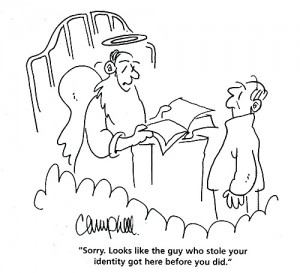
Philosophers have been grappling with the question of identity (i.e., how does a person retain a continuous sense of self even when all physical matter is replaced multiples times in a lifespan) for hundreds of years. From the Lockean memory theory that a person remains the same because he possesses the memories of his earlier self to the Cartesian theory that a nonphysical soul creates personal identity, most of the questions have been focused on what is inside of a person that creates identity,not on what outer forces shape it.
Althusser, on the other hand, believes that the creation of identity has more to do with outer forces than inner. He theorized that a person’s identity is created through the constant interpolation into the same identity by people and institutions. In other words, a person stays the same because he is continuously called into the same identity. This interpolation can function on several different levels, ranging from as broad as gender stereotypes to as specific as the expectations of a personality type that a friend can place on someone.
So what does this have to do with digital identity?

In “Constructions and Reconstructions of the Self in Virtual Reality: Playing in the MUDs,” Sherry Turkle addresses the the creation of “alternate” identities that is possible in virtual reality. Users of multi-player games, social media, and dating sites can create identities that are considered to be completely different from, and less authentic than, the user’s “real” identity.
But how would Althusser view this idea of digital identities being less authentic? If someone is interpolated into one identity by a virtual community and another by a physical community, then who is to say that either of these identities is more real than the other? Are we to pull from DesCartes as far as to say that a digital identity that differs from the non-digital is not a true representation of the self, and by extension, the soul?
The study of digital identities has the potential to call into question the long-held assumption that identity is static and intrinsic. This can occur in a relatively small way such as allowing for the expression of seemingly contradictory personality traits. It can also work in much larger ways, such as through disrupting the essentialist idea that biology and gender expression are intrinsically connected. Although this might appear to be an unsettling dismantling of the comforting ideas of selfhood, it is important to consider what can actually be considered as intrinsic and what is constructed by external forces.